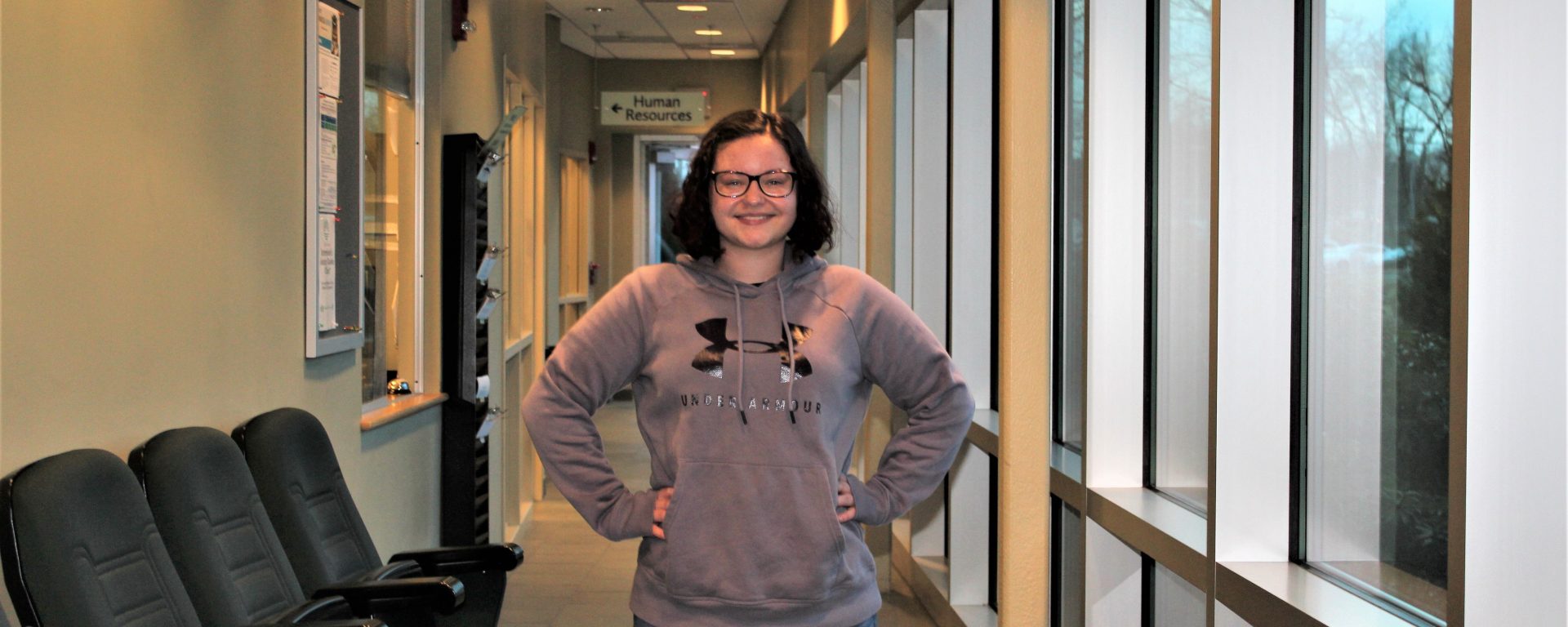The heartbeat behind healthcare: How CTRA scholar Samantha Rini moved from following the rhythm of music to following her passion for patient care
As a competitive contemporary dancer for more than 15 years, occasional aches were anything but out of the ordinary for Samantha Rini. “Injuries were my normal,” she casually stated, so when she acquired her last injury during her junior year of high school, she didn’t realize how bad it truly was.
A month later, Samantha started feeling pain in her lower back. By month two, she started to lose feeling in her legs. One day during class, her knees gave out completely, and she collapsed to the floor. Not long after, it was discovered that Samantha was suffering from an L5-S1 herniated disk. After seeing countless doctors, physical therapists, massage therapists, and receiving multiple rounds of cortisone injections, Samantha was forced to hang up her dancing shoes. “It was a big piece of me,” Samantha admitted, “but thankfully, dancing taught me to push through and keep going.”
A step in another direction: Switching up her spotlight to success
After closing the door on her dancing dreams, Samantha found a new focus for her future. After spending countless hours in doctor’s offices and waiting rooms, it’s no surprise that Samantha was captivated by a career in nursing. “I’ve always been a very caring and empathetic person,” she recognized.
Samantha related an early experience she had as a considerate caregiver. “My grandma had fallen on ice, hurt her hip, and was staying at our house for a little bit,” Samantha shared. “She is older and needed help getting to the bathroom. And even though I had school in the morning, I remember staying up the entire night to make sure that I would be awake to help her if she needed to get up and navigate through the house in the dark.”
When it came to her education, Samantha had a hunch she might focus on nursing from a young age. “I was always told by my family that I should go into healthcare because I care that much about other people,” Samantha said. So when she became a student of Connecticut River Academy ’s Early College Program, Samantha was “readying [herself] for the nursing program at Goodwin.”
Right on cue: applause-worthy academic curriculum
“My local high school had early college classes, but it was different because you were in class with other high school students, whereas with CTRA’s Early College Program, I was able to walk right down the street to Goodwin and take college classes with adults,” Samantha explained. As part of the Early College model, sophomore and junior year students take cutting-edge classes that cover topics like college prep, public speaking, English literature, and psychology. Once CTRA scholars pass the advanced courses, they start their half-day college classes on Mondays and Wednesdays with other CTRA scholars. By their senior year, CTRA Early College scholars take classes with Goodwin University students.
“It was a smooth transition,” Samantha conveyed. “Because of CTRA’s Early College Program, I was able to start college classes a lot sooner.” Appreciative of CTRA’s easy academic progression, Samantha shaved a year off of college, tuition-free (including books). “I didn’t have to pay for any of it,” Samantha indicated. “I don’t know how I would have gone to college not having this experience. CTRA helped me learn what a college class was going to be like, and ultimately set me up for success.”
A curtain call to a compassionate career
Now an accomplished student in Goodwin University’s associate degree in Nursing program, Samantha is capitalizing on the convenience of customizing classes that fit around her schedule. “I completed a lot of my prerequisites online, and I’ve been attending my nursing classes at night,” Samantha detailed. “I’ve also attended morning, afternoon, and weekend clinicals,” she added.
When asked about her experience with Goodwin professors, Samantha’s point of view was a positive one. “The professors are willing to work with you no matter what,” she shared. “I’m not afraid to go up to them with any questions, or to meet with them outside of class to go over exams. I feel open to communicate with clinical advisors and other students, too. You don’t feel like you blend in with everybody at Goodwin, and the classrooms are small enough that you feel like you’re noticed.”
Samantha will be graduating from Goodwin University in December 2020. “I’ve always wanted to be proud of my accomplishments and to make my parents proud,” Samantha said, smiling. Comfortable being on the move from her former dancing days, Samantha is looking forward to the possibility of travel assignments specializing in medical-surgical and behavioral health fields. From monitoring musical beats to now honing in on the heartbeat of healthcare, Samantha hopes to go back to school for her BSN with the ultimate goal of earning her Advanced Practice Registered Nurse (APRN) degree.
“Being at Goodwin made me take a step back and say, ‘This is what I really want to do,’” Samantha reflected. “Towards the end, the nursing program prepares you for whatever life is going to throw at you.” And, as someone who has fallen and gotten back up time and time again, Samantha encourages other students that “even broken wings can fly” and that they, too, “can always get up, heal, and learn.”
Learn more about Goodwin’s associate degree in Nursing today!
Goodwin University is a nonprofit institution of higher education and is accredited by the New England Commission of Higher Education (NECHE), formerly known as the New England Association of Schools and Colleges (NEASC). Goodwin University was founded in 1999, with the goal of serving a diverse student population with career-focused degree programs that lead to strong employment outcomes.

